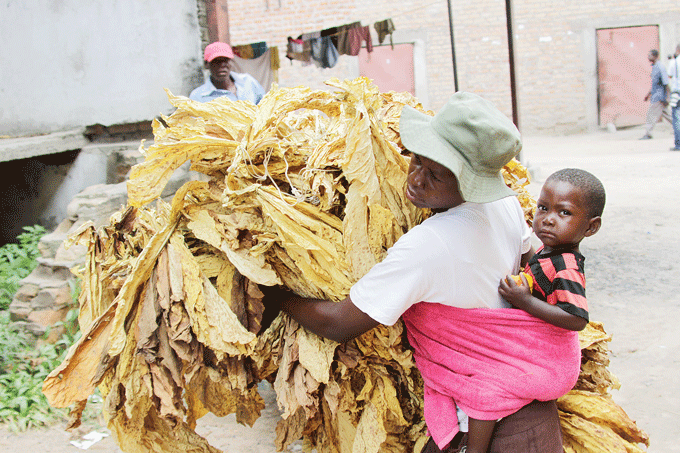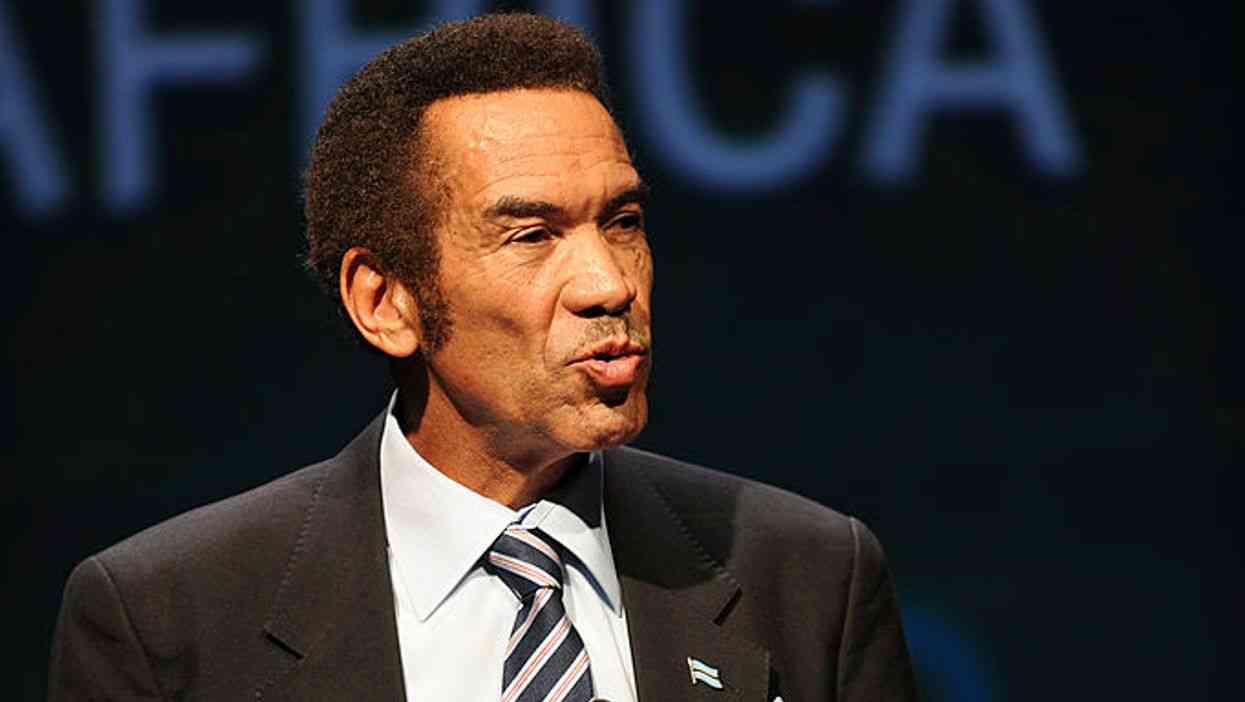
BY MIRIAM MANGWAYA
“If my father was employed, perhaps I would not be wandering from one farm to the other searching for part time jobs,” said Edna Moyo*.
At the age of 16, Edna is already shouldering the responsibility of helping her mother to provide for their family of six, while her peers concentrate on school and enjoy their childhood.
Edna told her sad story in a recent interview with The Standard, relating how her father never got employed and as far as she remembers, all he has done is drink, and drink some more.
The on-going lengthy Covid-19 lockdowns that have necessitated the closure of schools have afforded Edna an opportunity to help her mother provide for the family, a task that would have been daunting for her mother alone.
In the Gilstorn farming area in Beatrice, Mashonaland East Province, where they live, employment opportunities for domestic workers or other feminine duties are rare.
So Edna has to go for the available farm work that is ordinarily men’s territory.
“Poverty knows no gender boundaries. I would have wanted to be employed as a house help, but the jobs of that sort are scarce in this locality,” Edna said.
- Chamisa under fire over US$120K donation
- Mavhunga puts DeMbare into Chibuku quarterfinals
- Pension funds bet on Cabora Bassa oilfields
- Councils defy govt fire tender directive
Keep Reading
“Farmers are not interested in domestic work and would never employ a maid.
“All they look for is farm labour and the natural candidate is the boy rather than the girl.
“So in order to get this job, girls must prove their stamina.
“As a result, just like the boys, I have to learn how to grade tobacco for marketing, or carry tobacco from the fields to the transportation site, among other duties.
“We get paid according to the work done so I have to keep up with boys to get good daily wages,” said Edna.
Many young village girls are increasingly breaking the traditional norms and engaging in jobs ordinarily reserved for men in farms and other sectors, to earn a living.
Research conducted by The Standard in the Gilstorn area showed that girls below the age of 16 were being recruited on farms for various part-time menial jobs, in violation of the constitution and other international treaties against child labour.
An estimation of 152 million children are involved in child labour globally, while 73 million are exposed to hazardous work, according to the International Labour Organisation (ILO) 2017 report on Global Estimates of Child Labour.
The organisation also noted that Africa has the highest prevalence of child labour, which stands at 19,6%.
Statistics released by ILO show that child labour cases were rampant in farms more than any other sectors of the economy with a prevalence rate of 70,9 %.
In Zimbabwe, a survey conducted by the Ministry of Public Service Labour and Social Welfare on child labour in 2019 revealed that, the practice was rampant in tobacco farms, with a prevalence rate of 26%.
In the ILO report, the proportion of girls in child labour stands at 42 % which is lower than 58% of boys, but the decline in child labour among girls was only half that of boys between 2012 and 2016.
Studies have shown that although boys appear to face great risk of child labour than girls, the latter are more likely than boys to perform double duty, a reflection of an under-reporting of work performed by girls.
In her 2014 journal on Women and Health, renowned geneticist Karen Messing said biological differences between men and women were culturally used to justify exclusion of women from jobs, which were harmful.
“Allegedly for their protection, women are relegated to jobs supposedly adapted to their unique physical capacities and excluded from jobs which are said to endanger their health,” Messing said.
“The so-called women’s jobs are claimed to reflect women’s natural qualifications in requiring less strength, more dexterity, less emotional stability and involving less risk for potential offspring.
“But it is impossible to demonstrate scientifically the existence of biological differences between women and men, which suit either sex for particular jobs.
“Working conditions, which are cited to justify the exclusion of women are also harmful to male workers.”
Edna told The Standard that although she was employed as a part-time worker on the farms, she still had to perform other household chores at home, which left her with limited free time to spend with her friends.
Local child rights activists said although it was an achievement for girls to break the norms and perform jobs that were male-dominated, when they were being exploited for labour, it was an issue of concern.
Cynthia Muchanyara Mukamuri, secretary-general of the Young Women Christian Association, a private voluntary organisation promoting women empowerment, said engaging in male-dominated industrial sectors to alleviate poverty risked the girl child indulging in early sexual encounters.
“The fact that the girl child is venturing into farm work or artisanal mining, sectors which used to be male-dominated is a result of poverty that has driven these girls out of their comfort zones,” Mukamuri said.
“This, however, predisposes the girl child to all forms of abuse since the farming and extractive industries are predominantly male.
“The impact may not be immediate but in the near future, if health mapping is done, results will show that cases of sexually transmitted infections, HIV new infections and unwanted pregnancies will be relatively higher in areas where child labour is rampant.
“What is worrisome is that teenage girls below the age of sexual consent, which is set at 16 years in Zimbabwe, dominate labour in farms and in artisanal mining areas.
“This also lowers the age of first sexual debut for girls.”
Mukamuri advocated for sexual and health and reproduction lessons to be included in the school curriculum so that girls know how to defend themselves when they are being abused.
Another child rights activist Hellen Venganai, director of Mambure Tust, said exploitation of labour from girls below the age of 16 was detrimental to both their social development and sexual health.
“If girls are forced by circumstances to work, it means they are exposed to child labour which may negatively affect their health and also keep them out of school,” Venganai said.
“At the same time, they become prone to sexual exploitation, especially if they are assigned labour intensive jobs.
“Older men and boys may ask for sexual favours in return for helping the girls with their tasks.
“This may also push girls into child marriage.”
Zimbabwe National Council for the Welfare of Children director Taylor Nyanhete said in the midst of Covid-19 induced hardships, there was need for strong social safety nets to cater for the immediate needs of girls.
Social grants targeted at vulnerable households could play a significant role in protecting girls from poverty.
There was no justification for children to help parents earn a living no matter the circumstances, Nyanhete said.
“Parents have an obligation to fend for their children,” he said.
“In times of conflicts and disasters such as the Covid-19 pandemic, children remain the most vulnerable group in communities, who need parental care or protection from various caregivers.
“It is during these times where caregivers should ensure that children’s needs are being catered for.”
Global studies have revealed that due to the Covid-19 pandemic, there is a risk of communities backtracking in progress made in the fight against child labour, hence the need for governments to scale up efforts to end the practice.
The United Nations general assembly declared the year 2021 as the year for Elimination of Child Labour.
“Differences between boys and girls in terms of the extent and nature of their involvement in child labour underscore the continuing relevance of policy measures that address the role of gender in determining whether children are sent to work and the risks they face once there,” ILO said.
“The results indicating that girls shoulder disproportionate responsibility for household chores also raise important gender concerns that merit consideration in child labour policies.
“In regional terms, Africa, where child labour is highest in both proportionate and absolute terms, and where progress has stalled, remains a particular priority.”
- This article was produced through sponsorship from WAN –INFRA Women In News (WIN) under the Social Impact Reporting Initiative. However, content does not reflect views of WAN- INFRA WIN.
- Not her real name










